The 1810s

Courtesy of Ashley D. Smith - A Grave Concern.
I've been following Ashley D. Smith (A Grave Concern)'s photos on Flickr for quite some time. She's photographed many of the oldest cemeteries in northeast Ohio in considerable detail - she's got more than 20,000 photos in her account. Further, she offer the photos under a Creative Commons license.
A huge selection of historic material, photographed well, and mine for the asking? How could I resist?
You might ask why, then, I'm only now posting something. It's simple, really: I couldn't figure out what to say about them. Yes, I'm talking about physical artifacts of European settlers that are older than the oldest surviving buildings, in public locations, and yet I couldn't figure out anything to say.
Why? There's been very little work done on historic grave markers in this area. Unlike the region's architecture, which quickly developed distinctive elements, the gravestones in these cemeteries followed much of the stame stylistic traditions found on the east coast. While there are some that stray from these traditions, I really don't have the art history background to adequately analyze said differences.
On Tuesday, I came across a new set of photos from Ashley D. Smith - the cemetery at First Presbyterian Church, at 16200 Euclid Avenue in East Cleveland. They're in just about the best condition for anything I've seen this old in the area - perhaps this is due to slight differences in the sandstone available in this vicinity, or perhaps it is due to the greater distance from downtown Cleveland (and therefore, pollution) than some of the other sites.
While the individual names may not be that well known, the families - Dille, Eddy, and McIlrath - are well known among the early settlers of this area.
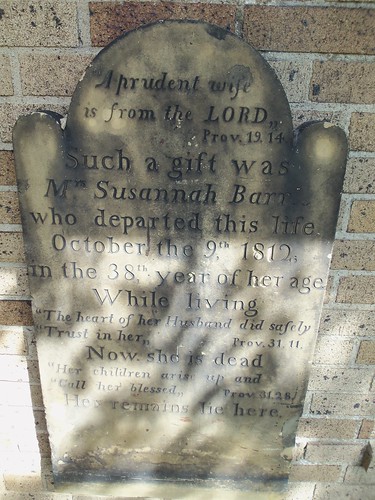
Courtesy of Ashley D. Smith - A Grave Concern.
Prov. 19.14.
Such a gift was
Mrs. Susannah Barr,
who departed this life
October the 9th, 1812;
in the 38th, year of her age.
While living
"The heart of her Husband did safely
Trust in her". Prov. 31.11.
Now, she is dead.
"Her children arise up and
Call her blessed." Prov. 31.28.
Her remains lie here.
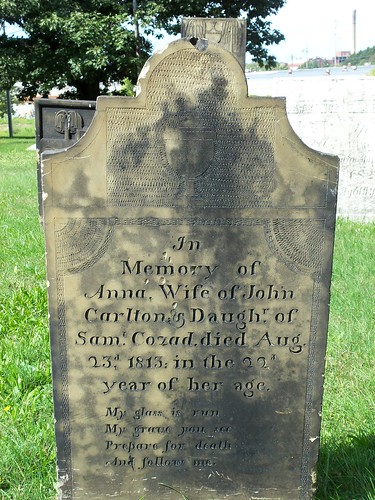
Courtesy of Ashley D. Smith - A Grave Concern.
Memory of
Anna, Wife of John
Carlton; & Daughr. of
Saml. Cozad, died Aug.
23d, 1813: in the 22d
year of her age.
My glass is run
My grave you see
Prepare for death
And follow me
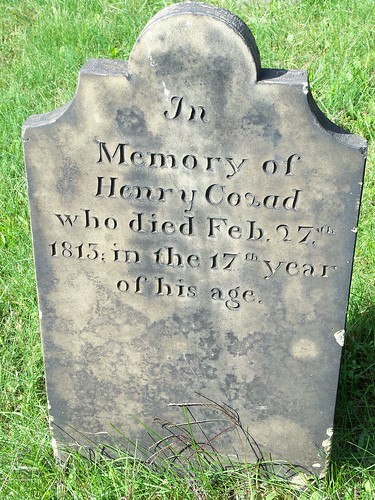
Courtesy of Ashley D. Smith - A Grave Concern.
Memory of
Henry Cozad
who died Feb. 27th
1813; in the 17th year
of his age.
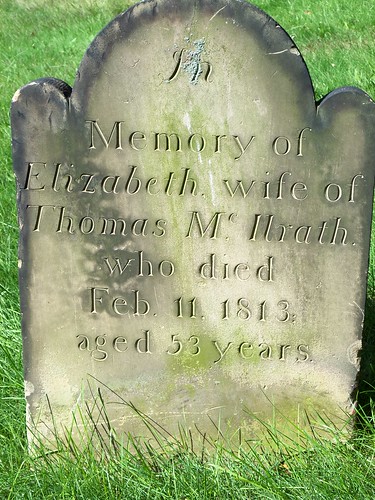
Courtesy of Ashley D. Smith - A Grave Concern.
In
Memory of
Elizabeth, wife of
Thomas McIlrath,
who died
Feb. 11, 1813;
aged 53 years.
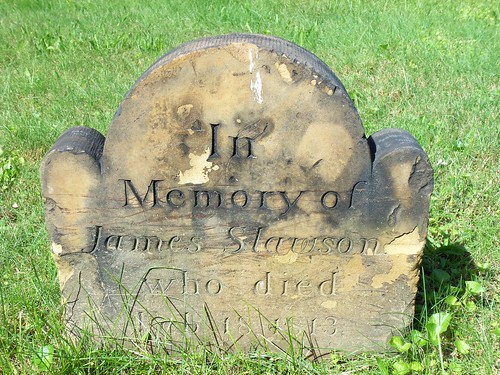
Courtesy of Ashley D. Smith - A Grave Concern.
In
Memory of
James Slawson
who died
Feb. 18, 1813.
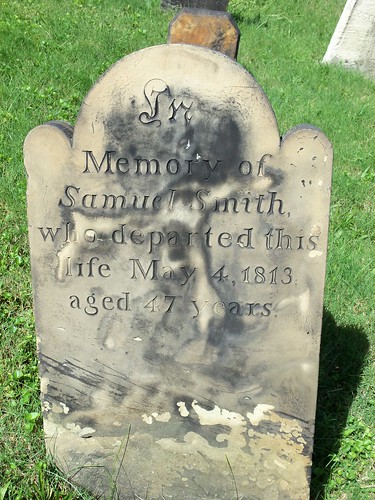
Courtesy of Ashley D. Smith - A Grave Concern.
In
Memory of
Samuel Smith,
who departed this
life May 4, 1813;
aged 47 years.

Courtesy of Ashley D. Smith - A Grave Concern.
ISAAC NEWTON,
Son of A. & E. DILLE
who died
Dec. 16, 1814,
?? E 6 y. & 8 m.
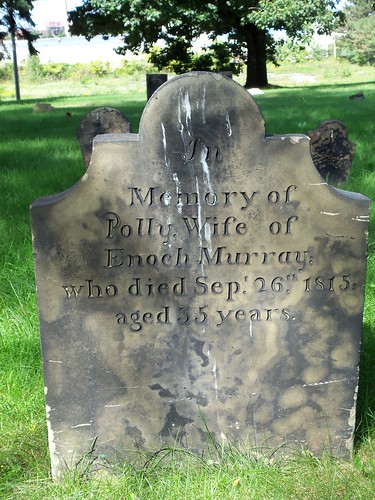
Courtesy of Ashley D. Smith - A Grave Concern.
In
Memory of
Polly, Wife of
Enoch Murray;
who died Sept. 26th, 1815;
aged 35 years.
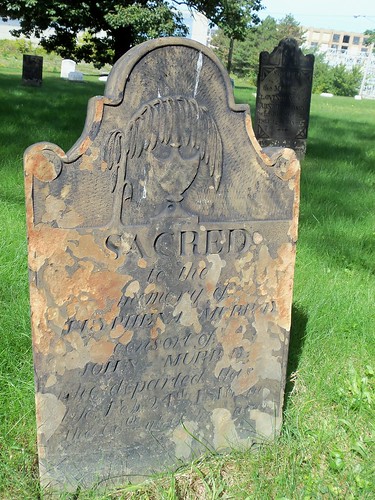
Courtesy of Ashley D. Smith - A Grave Concern.
SACRED
to the
memory of
JOSEPHENA MURPHY
consort of
JOHN MURPHY;
who departed this
life, Feb. 24th, 1816 in
the 60th year of her life.

Courtesy of Ashley D. Smith - A Grave Concern.
SACRED
to the
MEMORY
of
Mr. CALEB EDDY,
who departed this
life.
April. 21st 1818.
in the 64th year
of his age.
[remainder illegible]
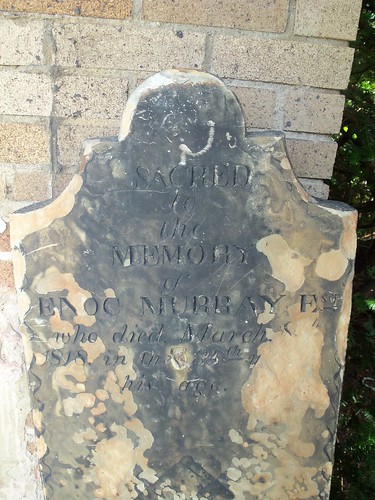
Courtesy of Ashley D. Smith - A Grave Concern.
SACRED
to
the
MEMORY
of
Enoc Murray, Esq.
who died, March. 8th,
1818, in the 35th year of
his age.
I've driven by this cemetery while visiting another major historic site, the Luster Tannery, many times, yet it never really caught my attention. It's amazing that these physical remnants of our early history have not only survived, but are in a location where anyone might stop by and visit them. Further, they're in relatively unaltered condition - compare that with, say, the few extant houses built a decade or two later, which have changed considerably with the needs of the residents over time.
Next week, I'll share the markers from this cemetery from the decade following this one.




Thanks, Christopher, for delivering Ashley’s photos. The FPEC cemetery is a regional treasure. Stone seems as if it lasts forever but all gravestones (unnaturally exposed rock) deteriorate. FPEC’s 1810s gravestones are therefore as old as the more readable stones found in New England cemeteries. In stepping into the FPEC cemetery, one can step back to New England. And there is more than stones at FPEC. In 1810s, the “Euclid Church” yard was a small clearing in a vast forest. Just to the east, rushing Nine Mile Creek was one the few sounds to be heard. At FPEC, using the 1810s stones as a cue, one can escape the din and the pavement to conjure up Cleveland’s formative years. There no place else like it. The FPEC gravestones were probably quarried in Euclid Township, more likely from Euclid bluestone; less likely from very fine-grained Berea Sandstone, also in Euclid.
ReplyDelete